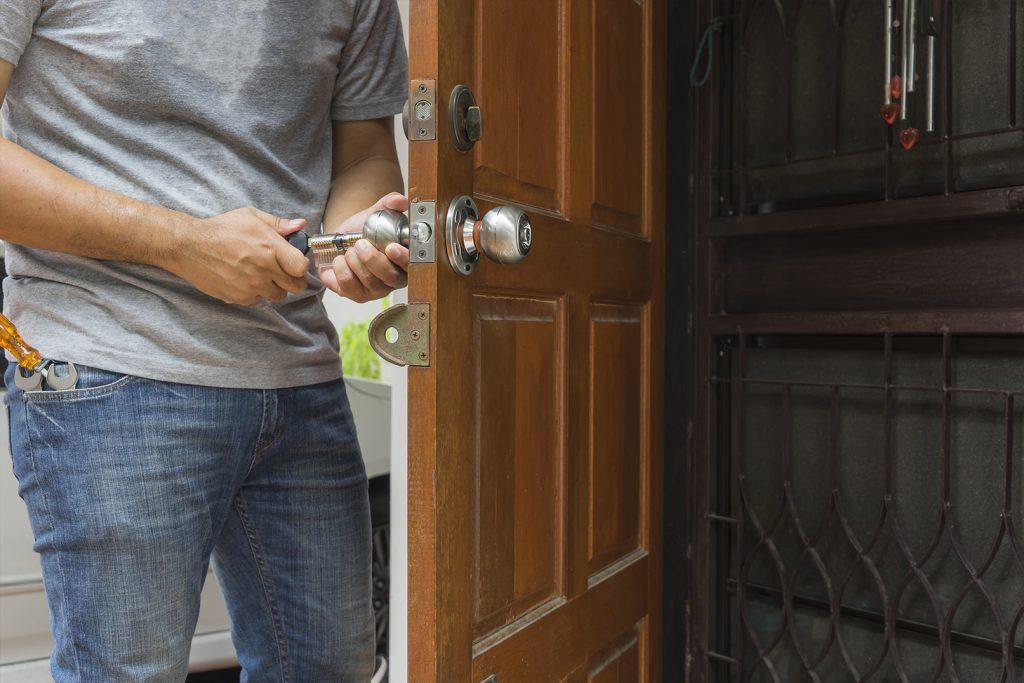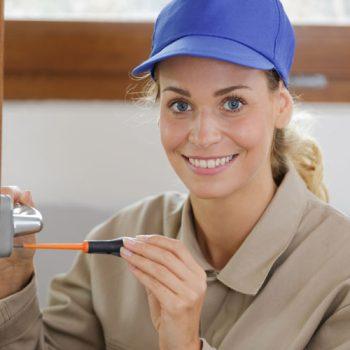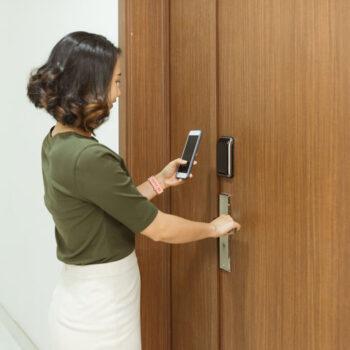Like any mechanical device, door locks require maintenance to function properly and avoid breaking. Homeowners use door locks frequently, and just as frequently neglect their maintenance.
Proper Door Lock Maintenance

Proper Door Lock Maintenance
Like any mechanical device, like a door lock requires maintenance to function properly and avoid breaking.
Homeowners use door locks frequently, and just as frequently neglect their maintenance. With decent quality locks, most failures stem from lack of maintenance or improper installation.
Most people believe a door lock will work forever. Indeed, even hardware store quality locks can work for decades, depending on the amount of usage. Most locksmiths agree the average lock’s lifespan is approximately seven years.
To get the most from your locks, consider these six key factors:
1. Make sure your door is properly hung
A lock only functions correctly if the door is properly installed and correctly prepared for the lock. A door that sags or binds may place an incredible amount of pressure on the lock’s latch or bolt, leading to a failure that can leave you locked in or out of your house.
2. Check your door’s screws and strike plates
At least one screw securing the top hinge to the door frame should be long enough to connect the door to the wall framing around the door. To prevent sagging and increase break-in resistance, homeowners should add a longer screw — typically three inches — to each hinge. The hinge screws are staggered, but the long screws should be located near the center of the wall.
While looking at the frame, check the strike plates. The plate for the deadbolt should be secured to the wall framing with long screws, just like the hinges.
3. Make sure your deadlatch and deadbolt work correctly
When closed, the deadlatch — the small plunger that rides on the latch’s flat side — shouldn’t fall into the strike plate. This is an important security feature built into modern entry locks that will not function correctly if not properly aligned with the strike plate. Binding or broken deadlatches commonly cause lock failures.
Also, with the door closed, the deadbolt should operate freely. You shouldn’t have to push, pull or lift the door to operate the lock. Ensure the deadbolt’s hole in the doorjamb is deep enough for the bolt to extend completely. Your deadbolt isn’t actually locked unless it’s fully extended.
4. Clean your door locks without overdoing it
External maintenance for locks is incredibly simple. At most, use a mild detergent to clean door locks. Some manufacturers suggest using only a damp rag.
You actually do more harm than good by using an abrasive or chemical cleaner on a lock. Petroleum-based products can also damage a lock’s finish. The protective coating on most locks will withstand normal use for many years, but not heavy abuse.
5. Door locks require annual lubrication
One of the most important, and most overlooked, maintenance factors is lubricating locks. Locksmiths don’t recommend petroleum-based products. Graphite lubricants work well, but Teflon and other dry lubricants are generally the best and easiest to apply.
Simply spray a small amount of lubricant into the key-way. Then run the key in and out of the lock repeatedly, wiping any debris from the key each time. Lubricate your locks like this at least once a year.
A more thorough lubrication would include removing the lock from the door, at least enough to apply lubricant to the latch or bolt.
6. Copy duplicate keys from an original
The final factor in maintaining a lock is maintaining the key itself. Keys are designed to wear before the lock does. When installing a new lock, it’s a good idea to set aside one of the original keys to use when creating duplicates.



